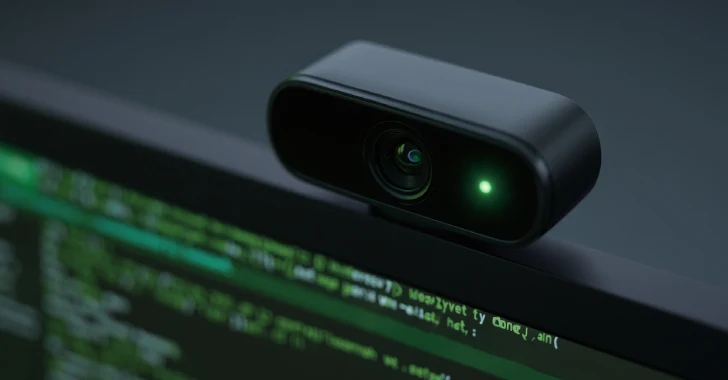
Linux-Based Lenovo Webcams’ Flaw Can Be Remotely Exploited for BadUSB Attacks
Unveiling the Covert Threat: Lenovo Webcam Flaws Enable BadUSB Attacks
The ubiquity of integrated webcams in modern laptops often belies a critical security vulnerability that can transform a seemingly innocuous peripheral into a powerful attack vector. Recent disclosures by cybersecurity researchers have brought to light a significant flaw in select Linux-based Lenovo webcams. This vulnerability could allow remote attackers to execute covert BadUSB attacks, injecting keystrokes and launching arbitrary commands independent of the host operating system. For IT professionals, security analysts, and developers, understanding this sophisticated threat is paramount to maintaining a secure computing environment.
The Anatomy of a BadUSB Attack via Webcam
Eclypsium researchers Paul Asadoorian, Mickey Shkatov, and Jesse Michael identified critical vulnerabilities within the firmware of specific Lenovo webcams. These flaws enable remote exploitation, effectively allowing the webcam to emulate a USB keyboard or other malicious USB device. This is the core principle of a BadUSB attack: convincing the host system that a legitimate, trusted peripheral is connected, when in reality, it’s a device programmed to deliver malicious payloads.
The peril of this vulnerability lies in its ability to bypass traditional host-based security measures. Since the attack originates from the webcam’s firmware, it operates beneath the operating system’s visibility. This “covert keystroke injection” means an attacker could type commands, open applications, or download malware without any visual indication on the screen, all while the primary operating system remains unaware of the malicious activity.
Affected Lenovo Webcam Models and Technical Insights
While the initial report does not list specific model numbers, it emphasizes that the vulnerabilities affect Linux-based Lenovo webcams. Organizations should prioritize identifying any Lenovo devices within their infrastructure that utilize Linux-based webcam firmware. The researchers highlighted that the flaw allows for “remote injection of keystrokes,” indicating a network-accessible attack vector, likely through compromised network services or malicious websites delivering exploits.
The technical underpinning of this vulnerability likely involves weaknesses in the webcam’s firmware update mechanism or a lack of proper input validation, allowing malicious code to be uploaded and executed. Once the webcam is compromised, its ability to spoof a Human Interface Device (HID) like a keyboard allows it to send arbitrary commands to the connected system, effectively granting the attacker full control.
Remediation Actions and Protective Measures
Addressing this type of firmware-level vulnerability requires a multi-faceted approach. Proactive measures are crucial to mitigate the risk of BadUSB attacks originating from compromised webcams.
- Firmware Updates: Monitor Lenovo’s official support channels diligently for firmware updates specifically addressing webcam vulnerabilities. Apply these updates promptly to all affected devices.
- Network Segmentation: Implement strong network segmentation to limit the attack surface for devices that might be vulnerable. Isolating sensitive systems from less secure networks can prevent direct remote exploitation.
- USB Device Control: Employ Endpoint Detection and Response (EDR) solutions and Group Policies to restrict the automatic execution of USB devices. While this vulnerability bypasses some typical USB controls, robust EDR can detect anomalous behavior post-exploitation.
- Physical Security: Maintain strict physical security protocols for all devices, especially those with integrated webcams, to prevent unauthorized access and potential direct compromise.
- Security Awareness Training: Educate users about the dangers of clicking suspicious links or downloading untrusted files, as these could be vectors for initial compromise leading to webcam exploitation.
Relevant CVEs and Further Research
At the time of this writing, specific CVE numbers for this exact vulnerability have not been publicly disclosed in the provided source. However, similar vulnerabilities in USB device emulation have been assigned CVEs such as CVE-2021-39294 (related to HID enumeration) or CVE-2020-0081 (related to USB audio device spoofing). Organizations should actively monitor the National Vulnerability Database (NVD) and Lenovo’s security advisories for the official assignment of CVEs related to this webcam flaw.
Tools for Detection and Mitigation
Detecting and mitigating BadUSB attacks, especially those leveraging firmware vulnerabilities, requires a combination of network-based and endpoint-based tools.
| Tool Name | Purpose | Link |
|---|---|---|
| Network Intrusion Detection/Prevention Systems (NIDS/NIPS) | Detect anomalous network traffic patterns that might indicate an attempted exploitation or post-exploitation communication. | Snort / Suricata |
| Endpoint Detection and Response (EDR) Solutions | Monitor endpoint behavior for suspicious activities, process injections, or unusual system calls initiated by compromised components. | Vendor specific (e.g., CrowdStrike, SentinelOne) |
| USB Device Control Software | Manage and restrict the types of USB devices that can connect to and operate on endpoints, including the ability to enforce read-only access or block specific device classes. | Group Policy (Windows) / Commercial solutions |
| Firmware Analysis Tools | Used by advanced security teams to analyze and audit device firmware for vulnerabilities. | Firmware Analysis Toolkit (FAT) |
Conclusion: Fortifying the Digital Periphery
The revelation of vulnerabilities in Linux-based Lenovo webcams highlights a critical often-overlooked attack surface: hardware firmware. The ability to transform an integrated webcam into a BadUSB attack device represents a significant threat, capable of bypassing traditional operating system controls and initiating covert attacks. As organizations increasingly rely on integrated devices, a holistic security strategy must extend beyond software to encompass robust firmware security, timely updates, and advanced detection mechanisms. Proactive vigilance and adherence to security best practices are essential to safeguard against these sophisticated and stealthy cyber threats.





